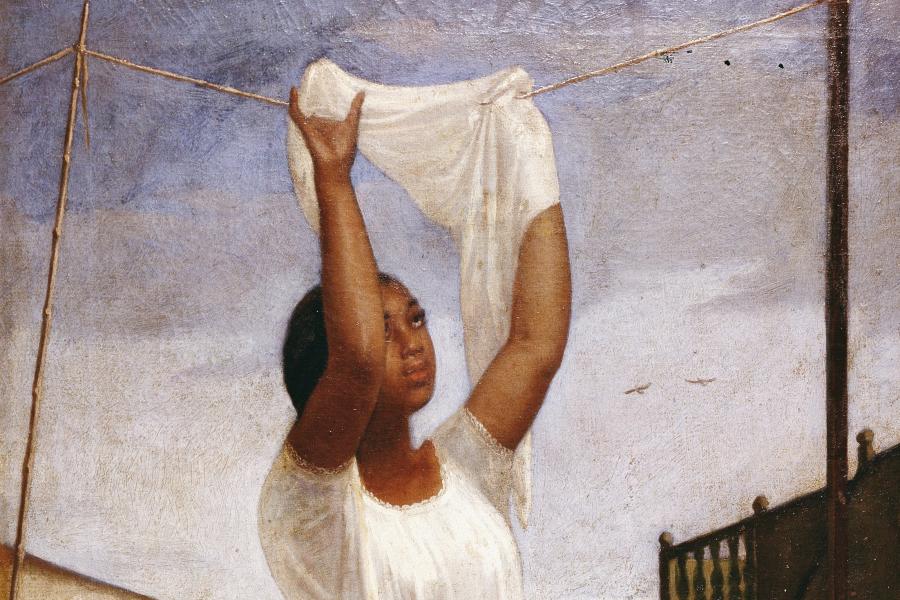Washing is hung to dry by a black servant, c. 1858

Date: c. 1858
Creator of the image: Francisco Laso Date of the image creation: c. 1858 Medium: Oil on canvas Person depicted: A black servant This painting, called ‘The Laundress’, shows a young black woman in a city hanging out items of clothing to dry on a line. Laso depicts the servant with a sense of dignity as she goes about her labour of daily-life. Many of Laso’s paintings depict ordinary people and everyday life activities. He also frequently depicted Native Americans without treating them as exotic. This arch of his work is sometimes seen as prefiguring the ‘Indigenismo’ movement of the early twentieth century, a political project that sort greater inclusion of indigenous peoples in Latin America, seeking to vindicate their cultures and achieve social justice as part of a reconciliation process. José Francisco Domingo Laso de la Vega y de los Ríos (1823–1869) was born in Peru to an aristocratic colonial family who were active in Peruvian politics. Laso studied art in Lima before spending several years in Europe studying art with various masters and visiting important galleries. Upon returning to Peru, Laso set up his own studio and pursued a career as a painter. When Spain attacked its former colony in the 1866 Battle of Callao, Laso worked as a fire-fighter to defend his city from the Spanish navy’s imperial attack. Thereafter, he briefly went into politics, before an epidemic of yellow fever hit Lima in 1868, with Laso contracting the disease while working with Red Cross to contain the outbreak. Laso was critical of the treatment of both black and Indian slaves and servants. According to Natalia Majluf (PhD dissertation, 1995) this was intensified through childhood experience: ‘Although it had no legal sanction, this unofficial slavery was carried out with impunity. As the rewards that were offered for escaped servants in the newspapers indicate, families assumed a right of ownership over them. Supported by an increasing urban demand and tacitly allowed by provincial authorities, the trade in Indian children became generalized throughout Peru. Most liberal writers of the mid-19th century, vigorously criticized this trade, and calls for sanctions were frequently heard in Lima newspapers.’ ‘Laso harshly attacked this practice in one of his most important texts, the “Story of Manuquita” which he inserted in his Aguinaldo. The story centers on a young Indian girl who served in his house when he was a child, and whom Laso described as "a piece of furniture or an animal that a deputy or subprefect had given to my sister as a gift." The painter recalls how a school friend had stolen his sister’s gold and pearl rosary, threatened the young Laso into silence, and thus turned him into an accomplice in crime. Inevitably, Manuquita was accused of stealing the rosary. Beaten by a public official into admitting a crime she had not committed, the young servant suffered the consequences of Laso's silence. The incident evidently marked Laso for life. In his text he presents it as one of the crucial events of his life: “What a miserable being I was! It is something that I have never forgiven myself for; and that confession weighs on me as a fatal sentence”.
Quotes
No quotes found.
Login to add a quote